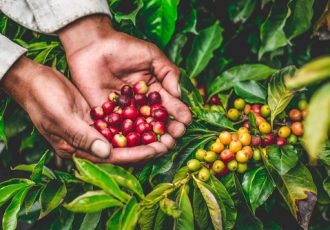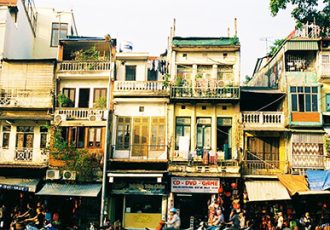The veneration of the Mother Goddess
What do you mean by “The Veneration of the Mother Goddess”? A visit to the Women’s Museum in Hanoi – one of the most interesting museums in Southeast Asia – is a must to better understand Vietnam’s rich and varied culture. At the Women’s Museum, a large part is devoted to explaining what concerns the belief in the Mother Goddess.
Horizon Vietnam Travel took a cultural tour to get a general insight into this beautiful belief. In this article, we provide you with basic information to understand this very ancient belief. Discover the veneration of the Mother Goddess with Horizon Vietnam Travel!
Summary
Who is the Mother Goddess?
We always ask ourselves the question: Who is the Mother Goddess? So, for believers, the Mother Goddess is the supreme deity who has reincarnated into three Goddesses of Three Worlds – the Celestial World, the Water World and the Mountain and Forest World) – to rule the country. The Mother Goddess protects and sustains us, gives us the strength to overcome natural disasters, bad luck, and diseases, and brings us peace and prosperity.
In Vietnam, belief in the Mother Goddess first arose in the sixteenth century. Many people worship the Mother Goddess. These Goddesses are worshipped in temples, pagodas, palaces or in modest private altars, according to different representations, sometimes in the company of geniuses. Practitioners pray in these religious places on the 15th day and the 1st day of the lunar month, for peace and fortune.

Its religious beauty
We find that the veneration of the Mother Goddess is a purely Vietnamese popular belief with a long history. It has adapted to the change in society and nowadays it is still widely practised in the country and within the Overseas Vietnamese community. Belief in the Mother Goddess is an aspiration for health, fortune, and luck. The spiritual need of the Vietnamese brings comfort and is very attractive to all social classes. The worship of the Mother Goddess is a culture, a scenic art that tells the legends of deserving characters towards the people and the country.
Mediums
In the rites of the incarnation, those who are consecrated to communicate directly with the spirits before the altar are called mediums. The mediums reproduce the legends of the gods who fought the invaders. This allows the younger generation to understand the origins of these deities.
But to become a medium, that person must have a predestined attachment to the Mother Goddess. This attachment is prescribed in the destiny of some people, both male and female.
One medium tells her story: “When I was born, the Creator appointed me as a disciple of the Goddess. However, I did not attend the mediumship ceremonies and did not know how to perform the rites. But suddenly, something in my heart compelled me to serve the Goddess. And that was all I could think about until I became a medium”
Rite of incarnation
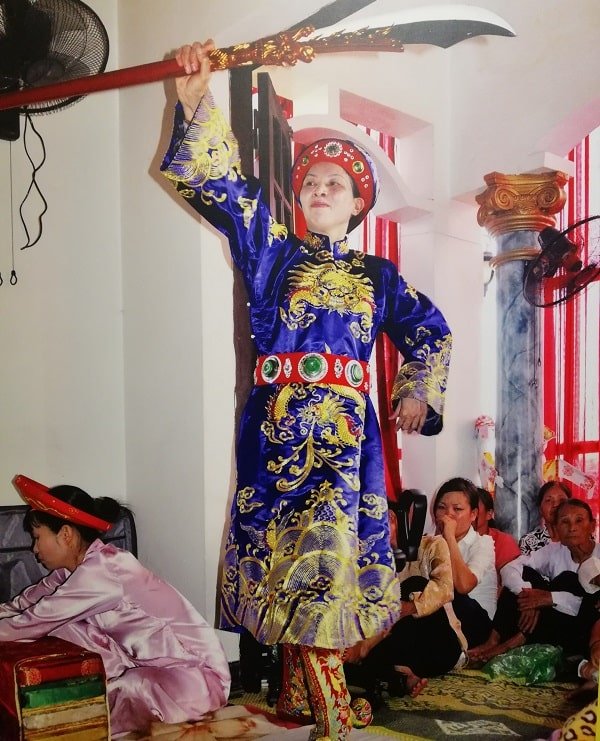
Hau dong – a rite of incarnation, is the most important of the cult of the Mother Goddesses. The mediums with their characteristic movements embody deities in a theatrical way. The audience can intensely perceive the beauty of the incarnated gods and genies who dance, dressed in sumptuous costumes, accompanied by Van songs that tell the legends and exploits of national heroes, in a colourful ritual space. The clothing is the distinctive sign of each incarnation corresponding to a genie. A beautiful costume stimulates the medium and enables him to arouse the enthusiasm of the audience. A colourful show!
Music in the ritual
The music, the Van song, plays an important role in the ritual. It is like an invitation to the Gods and Genies to join the ceremony in order to make it more lively. The singers and musicians perform music during the whole rite which lasts about 4 hours.
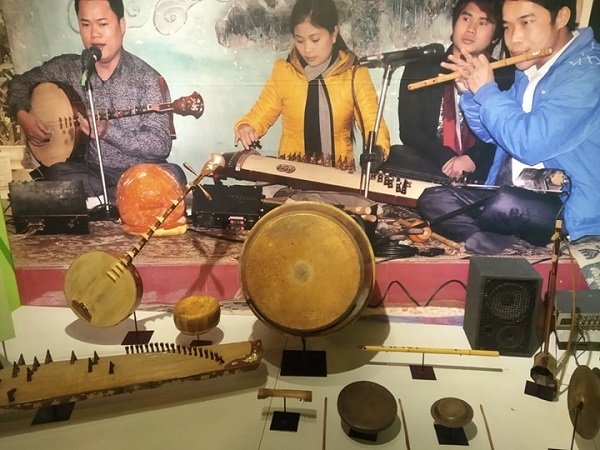
Offerings at the ceremony
The offerings received by the deities and then distributed to those who attend the ceremony are also called divine favours.
For believers, non-material divine favours are perceived in different ways: health, success, luck, and prosperity. As for material favours: fruits, sweets, etc., the people who receive them believe that they will one day be lucky. So they try to get as many favours as possible to bring them home.
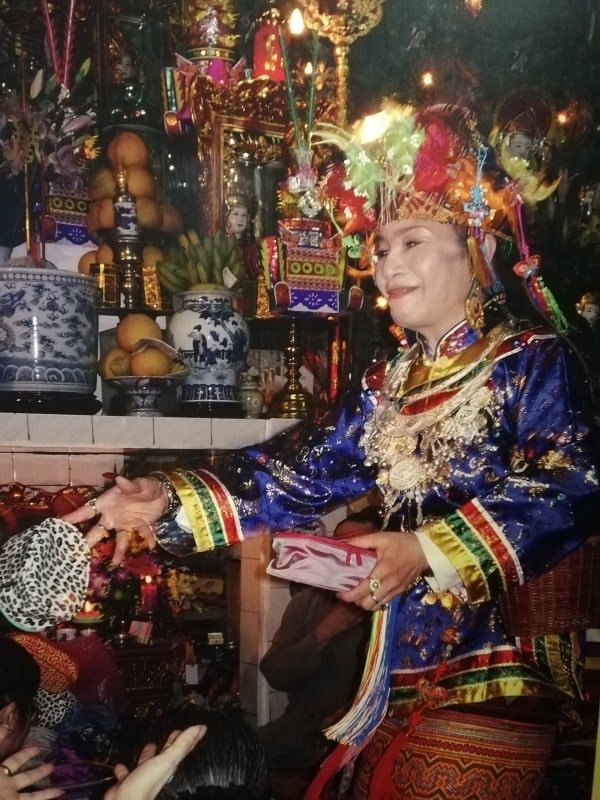
Essential value of veneration
A pure heart is the essential value of belief in the Mother Goddess. The Mother advises man to live honestly, to have a pure and generous heart, to behave worthily, to venerate the ancestors, and to be grateful to those who render services to the people and to the country.
Convinced that the Mother always protects us and brings us health, fortune, and luck, the followers of the belief express all their respect by presenting her with the offerings.
How believers feel about the Mother Goddess and ritual
At the Women’s Museum, we perceive the sincere feelings of the followers of this belief.
“The Mother Goddess protects all the people. I worship the Goddess so that my business goes well and I have good health, to avoid diseases.
“Frequently attending the incarnation rituals of the genies and gods I feel relaxed and serene, I feel rested and in better shape. After each ritual, I am very happy, spiritually comforted, with a feeling of fullness that words cannot describe.”
“After the ceremony, I feel completely relieved, with no feeling of fatigue. I am very happy because my requests were accepted by the Buddha and the Mother Goddess. They have blessed me and granted me health.
Horizon Vietnam Travel hopes you enjoy this article. If you are planning a nice visit to our country, you can attend a ritual performance to discover our religious culture!

